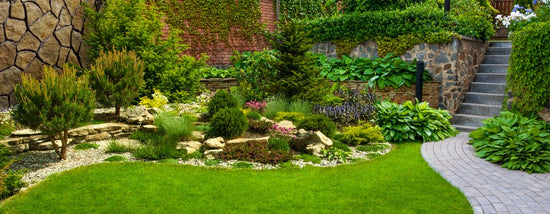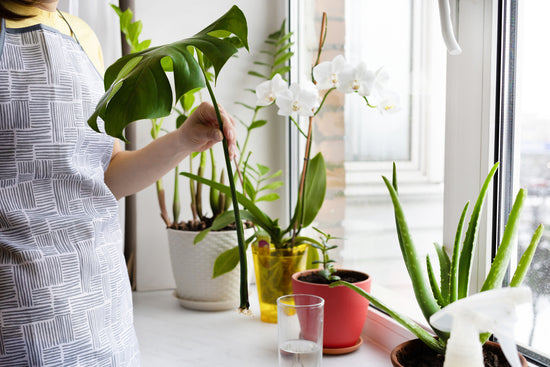Ever watched a flower pot break into pieces after you dropped it? Although this could seem like a minor disaster it might be the start of something lovely for your landscape. Consider the possibilities such broken remnants hold, rather than throwing them away. Broken pots, whether they're terracotta, clay, or ceramic, are more than just garden debris; they're an opportunity for creative expression and sustainable gardening.
Reusing damaged planters and flower pots not only saves money but also promotes environmentally friendly gardening practices. Each piece, no matter how small or jagged, can be transformed into an artistic element that enhances the visual appeal of your garden. So, let's delve into how these overlooked pieces can become integral parts of your garden's charm and functionality.
• Broken Plant Pot Ideas
Here are six ideas for using broken plant pots creatively in your garden:
1. Fairy Garden Creations

Transform a broken flower pot into a delightful fairy garden. Arrange the larger pieces as the base and use smaller shards to build little terraces and paths. Add moss, miniature furniture, and tiny plants to complete the magical scene.
2. Mosaic Projects
Collect various broken pots and use the pieces to create a mosaic. Embed the pot shards into the soil or cement them onto a larger, intact pot for a decorative effect. This is a great way to add color and texture to your garden.
3. Herb Gardens
If you have several large pieces, use each one as a separate compartment for different herbs. This way, you can have a neatly organized, easily accessible herb garden right in your backyard or balcony.
4. Succulent Arrangements

Use the distinctive shapes of damaged pot parts to fashion a striking arrangement of succulents. Plant various succulents in the crevices and hollows of the shards, arranging them in a sunny spot to enhance their growth and color.
5. Bird Bath or Feeder
Invert a larger fragment of a garden pot to serve as a base, and use a more concave piece as a topper for a DIY bird bath or feeder. This not only recycles the broken pot but also helps attract wildlife to your garden.
6. Edging for Garden Beds

Use broken clay pots to edge your garden beds. Bury them halfway into the ground to create natural and rustic-looking boundaries that also help keep mulch in place.
These creative uses of damaged pots not only help recycle materials but also add distinctive charm to your garden.
• Types of Planters and Their Best Broken Counterparts
1. Terracotta and Clay Pots
Terracotta and clay pots are well-suited for plants that enjoy dry or well-aerated soil conditions because of their classic appearance and porous nature. These cracked pot pieces make great natural earthy accent pieces for your yard. Use them as rustic labels for your herb garden or as a boundary for flower gardens.
2. Ceramic Pots

Ceramic planters are a stylish addition to any environment because they are available in an array of colors and glazes. Broken ceramic pieces are a great way to decorate other pots or garden structures with mosaic tiles. They can also be used as decorative mulch around plants or to create eye-catching, colorful highlights in garden walkways.
3. Concrete Planters

Durable and heavy, concrete planters are great for larger plants and outdoor settings. When you have broken pieces, they can be effectively used as sturdy edging for raised garden beds or as stepping stones in your garden, providing a stable and aesthetic solution.
4. Plastic Planters
While not as aesthetically pleasing when broken, plastic planter pieces can be repurposed creatively. They are lightweight and can be cut into strips or shapes to create labels for plants or used in the bottom of other intact planters to improve drainage.
Each type of planter material offers unique properties that can be leveraged even when broken. By matching these characteristics with the right gardening needs, you can optimize their second life and enhance your garden’s functionality and appearance.
• Practical Tips for Landscaping

Landscaping with broken pots requires thoughtful placement and secure installation. Begin by choosing pot shards that complement the size and style of your garden area. Arrange larger fragments as focal points or natural barriers within flower beds, and utilize smaller shards to add texture and interest around the bases of plants. Securely embed each piece into the soil to ensure stability and prevent them from tipping or shifting, which could affect plant growth or become a walking hazard.
For functional use of broken pots, consider their role in soil management. Placing broken clay pot pieces at the bottom of planters can significantly improve drainage, especially for water-sensitive plants. This not only aids in healthier plant growth but also recycles unwanted pottery pieces in a useful way, adding a layer of sustainability to your garden design.
Embracing the imperfections of broken pots allows you to add unique character and sustainable charm to your garden. By repurposing these pieces you not only give them a second life but also contribute to eco-friendly gardening practices. These shards have the power to completely change your outdoor area, whether you use them to create eye-catching designs or improve the usefulness of your garden beds. Never forget that every shattered pot has the capacity to inspire creativity and beauty. Thus, the next time you come across a broken planter, consider twice before throwing it away—your next garden.










